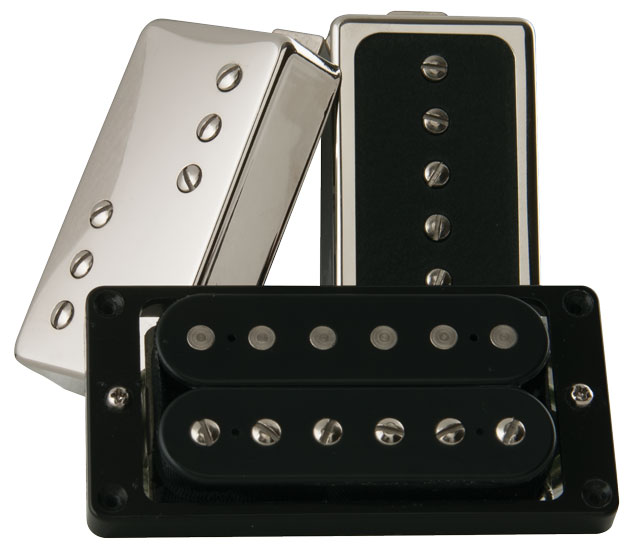For most players, the pendulum of guitar-pickup fashion seems to swing between humbuckers—be they vintage, PAF-style or something more modern—and some type of take on Strat- or Tele-style single-coils. But lurking somewhere in the middle is a pickup type that’s often overlooked: the P-90-style single-coil.
Gibson invented the P-90 and used it in many guitars between the pickup’s 1946 debut on through the dawn of the humbucker a decade later—and thereafter it became a mainstay on once-budget-priced models such as the Les Paul Junior or Les Paul Junior Special. Though the humbucker’s powerful tones and noise-free performance largely overshadowed the P-90, a vocal minority of players has long preferred the P-90’s crisper tones, clearer mids, and potentially ragged edge.
The P-90 is probably most associated with raunchy rock, from the Gibson SG Special Pete Townshend demolished at Leeds to Billie Joe Armstrong’s hard-working Les Paul Junior. Punk pioneers such as New York Doll Johnny Thunders and the Clash’s Mick Jones loved its raw intensity. And for some, the definition of P-90 attitude begins and ends with Leslie West’s tone on Mountain’s “Mississippi Queen.”
But the P-90 isn’t always rude-sounding. Consider the Beatles, who used P-90-equipped Epiphone Casinos throughout the band’s middle years. Even jazz players have embraced it, notably Grant Green and Wes Montgomery. (Wes played a Gibson ES-175 with P-90s until switching to a Gibson L5 with humbuckers in the latter part of his career.)
A Single-Coil Compromise? It’s probably an oversimplification to say that the P-90 splits the difference between a vintage-style Fender pickup and a humbucker, yet there’s some truth to the notion. The most likely P-90 converts are humbucker users who yearn for brighter tones and snappier attack, and single-coil players who wish their pickups had more midrange muscle.
Like humbuckers, P-90s rely on a bar magnet with steel pole pieces, as opposed to the individual magnetic pole pieces of most Fender pickups, an architecture that tends to deliver fatter mids and less twang than classic Fender single-coils.
Though the humbucker’s powerful tones and noise-free performance largely overshadowed the P-90, a vocal minority of players has long preferred the P-90’s crisper tones, clearer mids, and potentially ragged edge. Yet P-90s tend to sound twangier and more transparent than vintage-style humbuckers. (And yes, P-90s transmit 60-cycle hum just like most non-humbucking pickups.)
Chances are, more players would explore the P-90 sound if the pickups fit into guitars with Fender- or Gibson-style routing. But both traditional versions of the P-90—the “dog ear” and “soap bar” styles—require guitars specifically routed for those formats. That’s why so many manufacturers have started issuing humbucker-sized P-90-style pickups.
P-90 or Not? Please note the words “P-90-style.” None of the pickups covered here are true P-90s. As experts like Seymour Duncan, Lindy Fralin, and Jason Lollar hasten to point out, even if you use the same materials and manufacturing methods that Gibson employed in the 1950s, simply changing the format from the original P-90’s wide, low coil to the humbucker’s relatively tall, narrow one inevitably alters the tone. The most common compromise is to use thinner pickup wire (say, 43 gauge instead of 42) to permit the traditional number of winds on a humbucker-sized bobbin. But even then, the result won’t sound exactly like the original—or rather, the originals.
Like all vintage pickups, old P-90s exhibit major variations from unit to unit. The number of pickup-wire winds—which determines the output—can vary greatly. Magnet strength is also inconsistent: Gibson used varying types of alnico magnets, depending on what was available at production time. And in many cases, the qualities that make a player treasure a particular P-90 are environmental in origin, such as the degaussed magnets that can result from poorly stored pickups or habitually leaning a guitar against an amp’s speaker. Also, the practice of winding bridge pickups hotter than neck pickups (as most of the sets covered here do) is a strictly modern innovation. They just weren’t thinking that way in the 1950s.
As a result, this roundup doesn’t attempt to evaluate pickups in terms of vintage-style authenticity. Instead, I’ve tried to describe the pickups in objective terms with the aim of steering players toward the product that best suits their needs and tastes.

